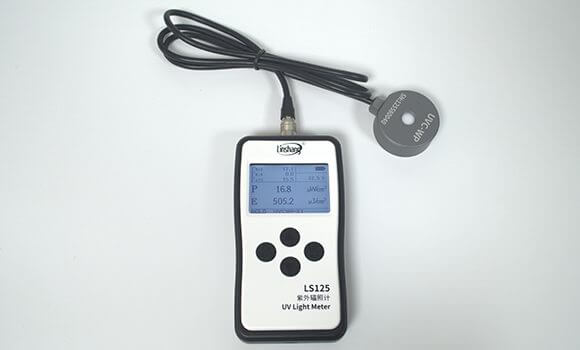UVC integrator | UV Water Disinfection Pros and Principles
To understand the precautions when using ultraviolet disinfection, we need to first understand the principles and advantages of ultraviolet disinfection.
1. UV disinfection principle
Scientific research shows that the ultraviolet disinfection method mainly damages nucleic acids by radiation damage and degree of damage to microorganisms, resulting in bond and chain breaks, thereby changing the biological activity of DNA so that microorganisms cannot replicate themselves. By doing this, the sterilization and disinfection will be achieved. However, the UV lamp intensity will gradually decrease during use. The UV light intensity should be measured frequently with an UVC integrator. Once it falls below the required intensity, it should be replaced in time.
2. UV disinfection advantages
Ultraviolet disinfection does not add chemicals to water like chlorine disinfection. It is a physical disinfection method that does not cause side effects on the human body when used in drinking water disinfection and retains minerals that are beneficial to the human body. Not only this, the ultraviolet sterilization has a wide range and fast speed. Under a certain radiation intensity, the general pathogenic microorganisms can be killed in only ten seconds.
All of these advantages are based on the wavelength of ultraviolet light within a suitable range. Only the wavelength of 200-280nm in the ultraviolet UVC region is suitable, especially near 254nm, which can achieve the best effect of ultraviolet disinfection. However, irradiation with a shorter wavelength of ultraviolet light (less than 200nm) will transform nitrate into nitrite, which will cause harm to the human body. And excessive consumption of nitrite will cause death. This shows the importance of proper UV intensity, but any machinery will inevitably cause errors caused by aging. It is possible to measure the intensity regularly with an UVC integrator.
3. How to use the UVC integrator?
The UVC integrator is suitable for UV irradiance measurement in the fields of photochemistry, polymer material aging, flaw detection, UV light source, etc. When using an UVC integrator to measure the strength of the ultraviolet lamp for disinfecting drinking water, first make sure that the voltage is 220V and the external ambient temperature is 20 ℃. The relative humidity is less than 60%. Then put the UVC integrator at a vertical distance of 1M below the center of the UV lamp. Read the data after 5 minutes of turning on the lamp to make the intensity reach a stable value. If you need to test the uv irradiation intensity (UV dose) of the UVC LED light sources, LS125+UVCLED-X0 UVC light meter is recommended.
